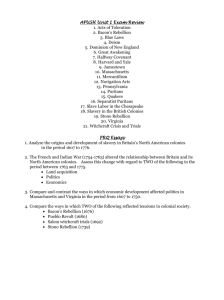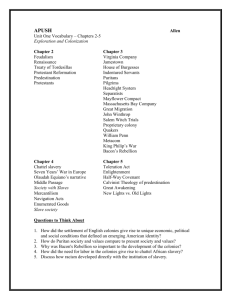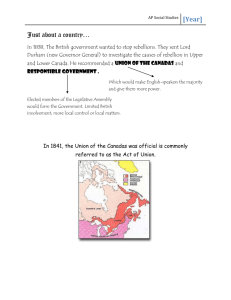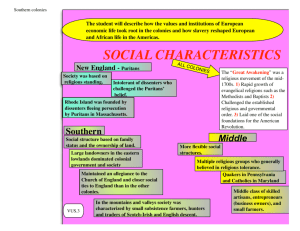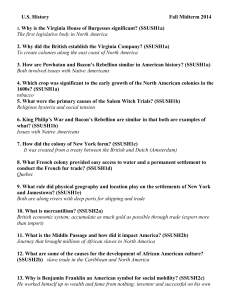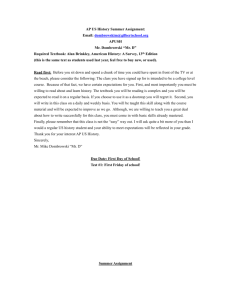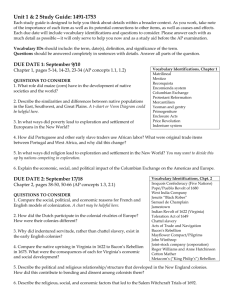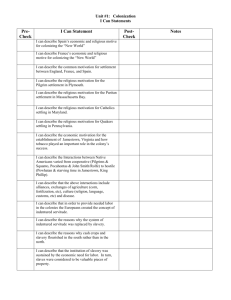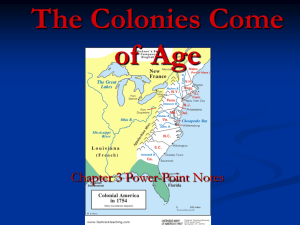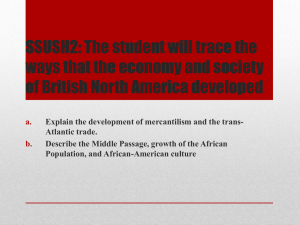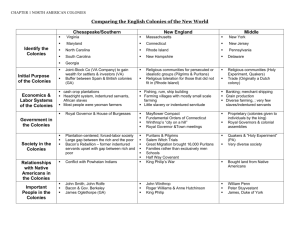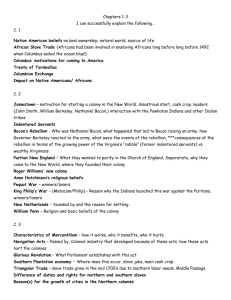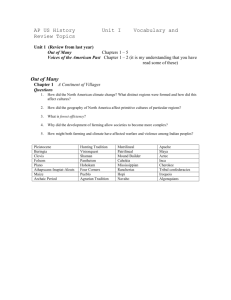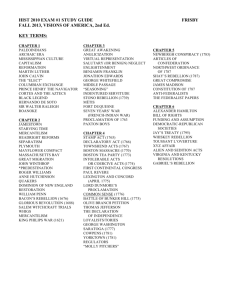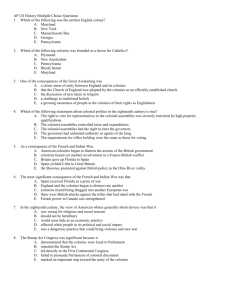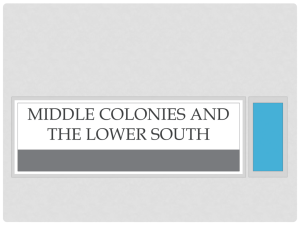Identifications - Mr. Williams` Public Wiki
advertisement
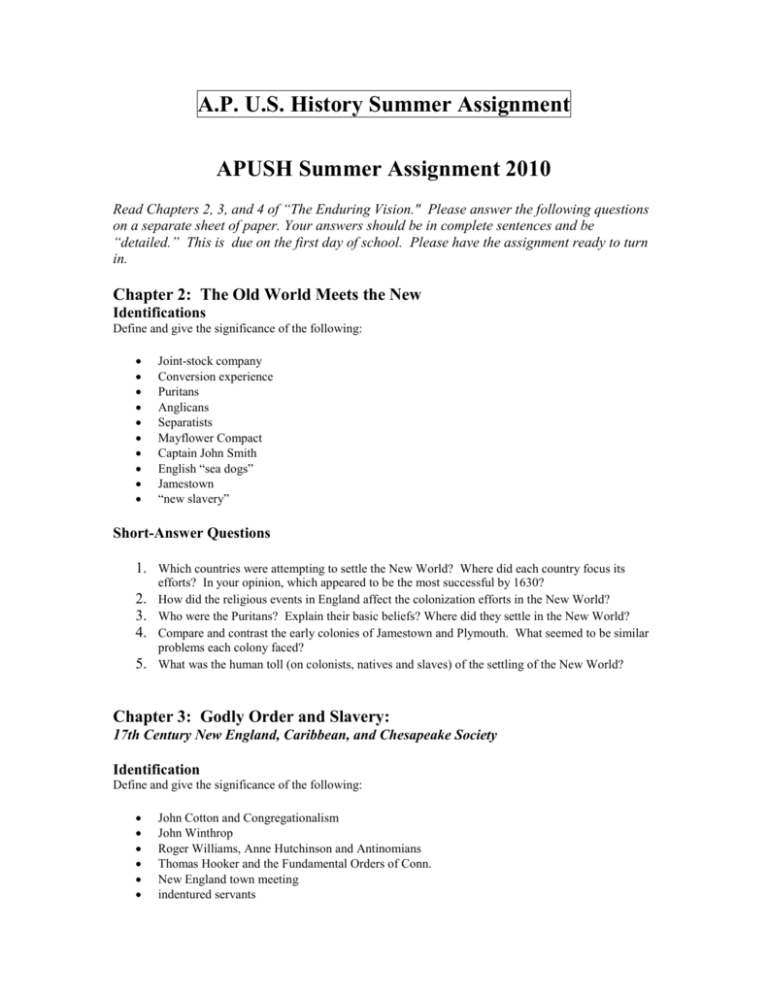
A.P. U.S. History Summer Assignment APUSH Summer Assignment 2010 Read Chapters 2, 3, and 4 of “The Enduring Vision." Please answer the following questions on a separate sheet of paper. Your answers should be in complete sentences and be “detailed.” This is due on the first day of school. Please have the assignment ready to turn in. Chapter 2: The Old World Meets the New Identifications Define and give the significance of the following: Joint-stock company Conversion experience Puritans Anglicans Separatists Mayflower Compact Captain John Smith English “sea dogs” Jamestown “new slavery” Short-Answer Questions 1. Which countries were attempting to settle the New World? Where did each country focus its 2. 3. 4. 5. efforts? In your opinion, which appeared to be the most successful by 1630? How did the religious events in England affect the colonization efforts in the New World? Who were the Puritans? Explain their basic beliefs? Where did they settle in the New World? Compare and contrast the early colonies of Jamestown and Plymouth. What seemed to be similar problems each colony faced? What was the human toll (on colonists, natives and slaves) of the settling of the New World? Chapter 3: Godly Order and Slavery: 17th Century New England, Caribbean, and Chesapeake Society Identification Define and give the significance of the following: John Cotton and Congregationalism John Winthrop Roger Williams, Anne Hutchinson and Antinomians Thomas Hooker and the Fundamental Orders of Conn. New England town meeting indentured servants Half-Way Covenant King Philip’s War Virginia House of Burgesses and Royal Governor’s Council Maryland Act for Religious Toleration Short-Answer Questions 1. What did John Winthrop mean when he spoke of his “city upon a hill”? To what extent were the Puritans successful in building a model community? How and why did the market economy threaten and ultimately transform the “city”? 2. How did religion shape New England society? What was the importance---and the fundamental weakness---of the “conversion experience”? Why did New England’s religious institutions and political institutions become far more democratic than those in England? 3. Why did African slavery develop in the Chesapeake colonies in the 17th century? How did the gradual shift from a plantation labor force of indentured servants to one of African slaves affect life in Virginia and Maryland? 4. What were the causes of Bacon’s Rebellion? How did the rebellion end? What were the consequences of the rebellion in terms of race and class relations in Virginia? 5. What were the general causes of conflict between European settlers and Native Americans in the 17th century English colonies. How did the conflicts impact settlers and Native Americans? Chapter 4: The Bonds of Empire 1660-1750 Identifications Define and give the significance of the following: The Dominion of New England Leisler’s Rebellion Mercantilism and the Navigation Acts Adam Smith’s The Wealth of Nations James Oglethorpe Stono Rebellion Enlightenment Deists Jonathan Edwards Short-Answer Questions 1. What were the similarities and differences in North American colonial settlement: 2. 3. 4. o British colonies o Spanish colonies o French colonies Discuss the racial and ethnic makeup and the social class structure of the mid-eighteenth-century America. How did the Great Awakening influence the movement toward the American Revolution? In what ways did mercantilism benefit the colonies? If there were benefits, then why did the colonists oppose the Navigation Acts?
